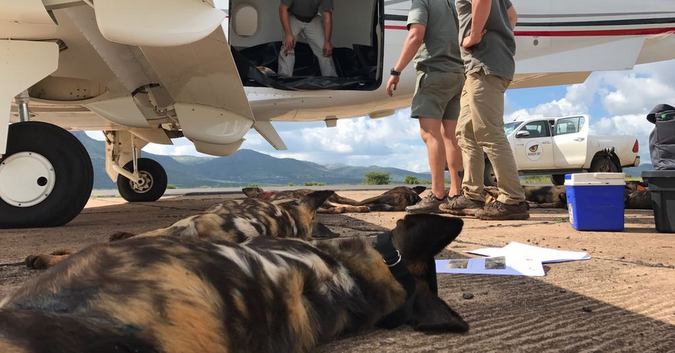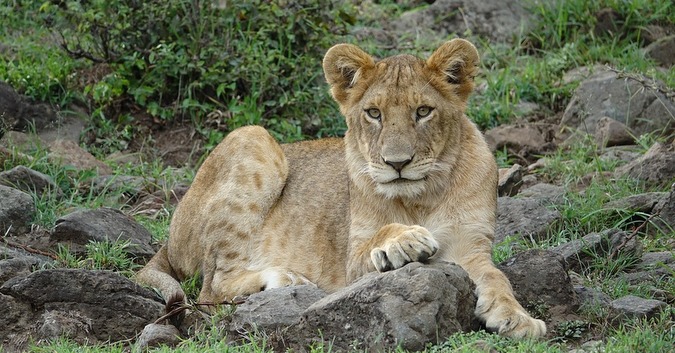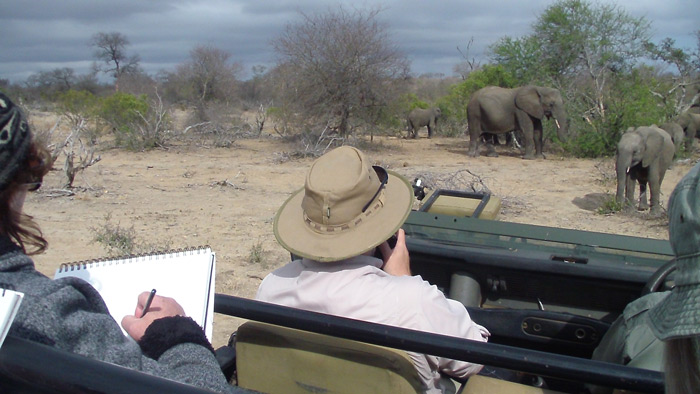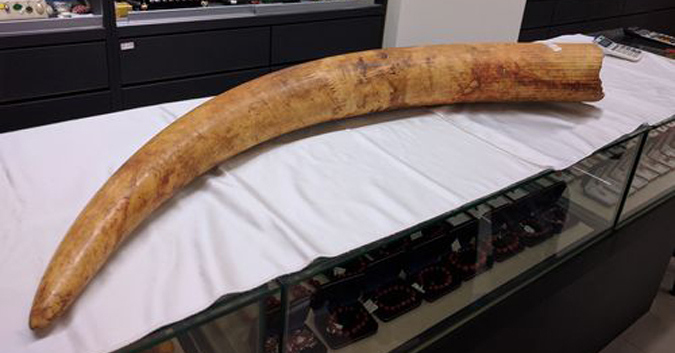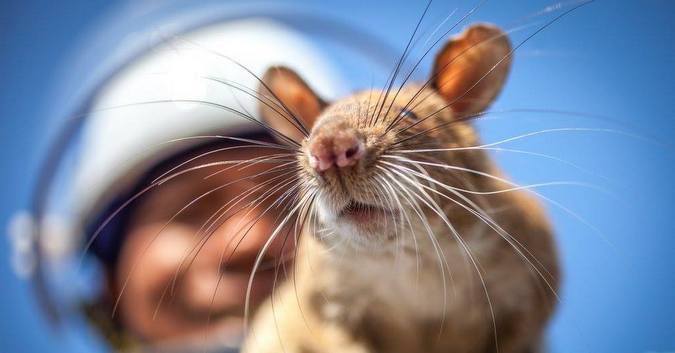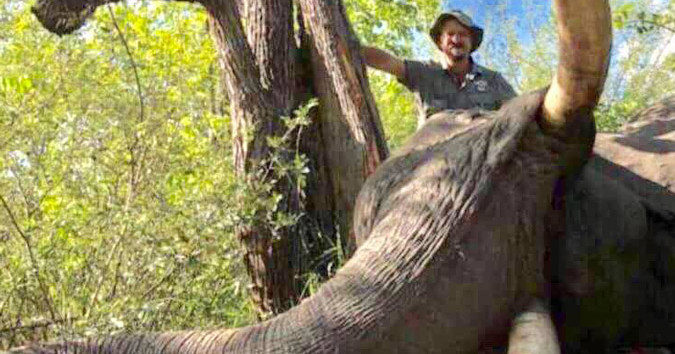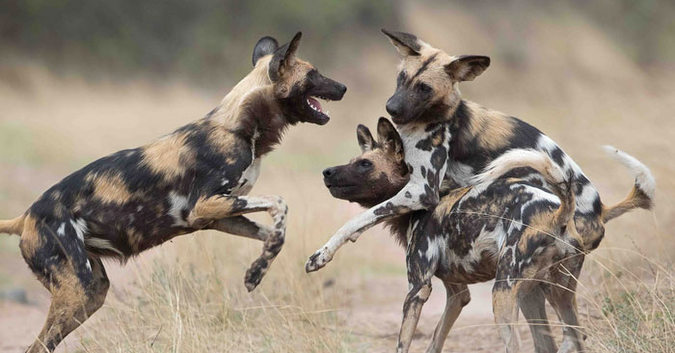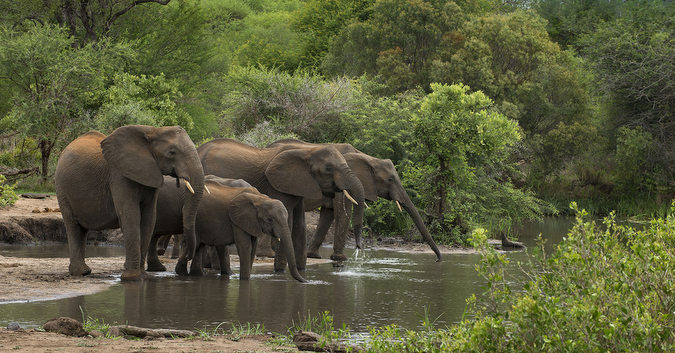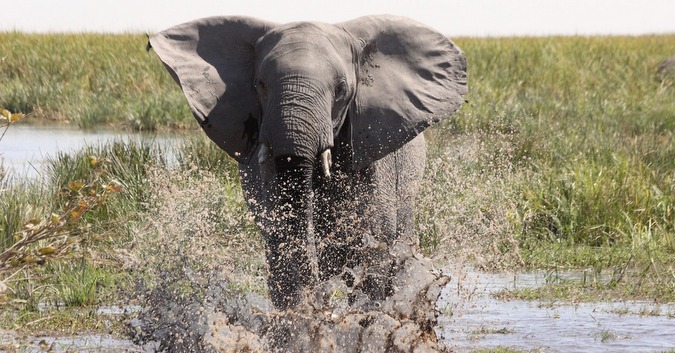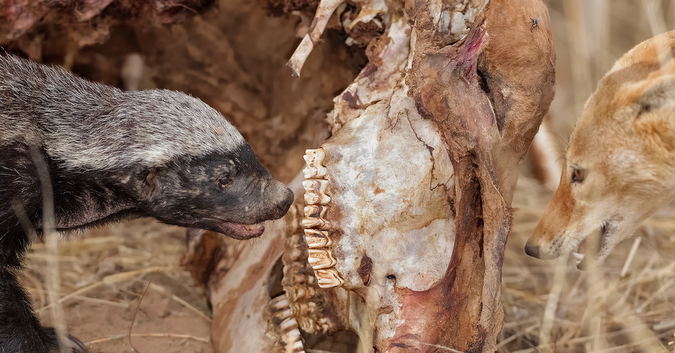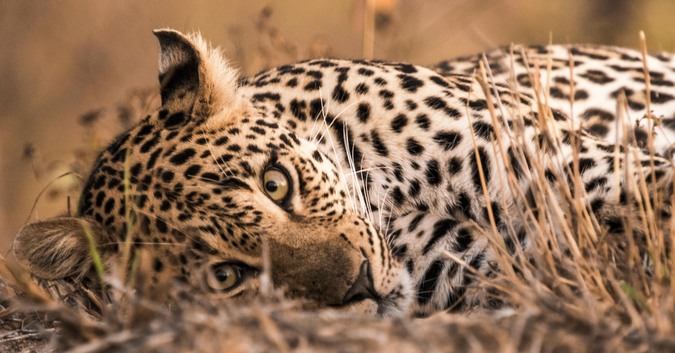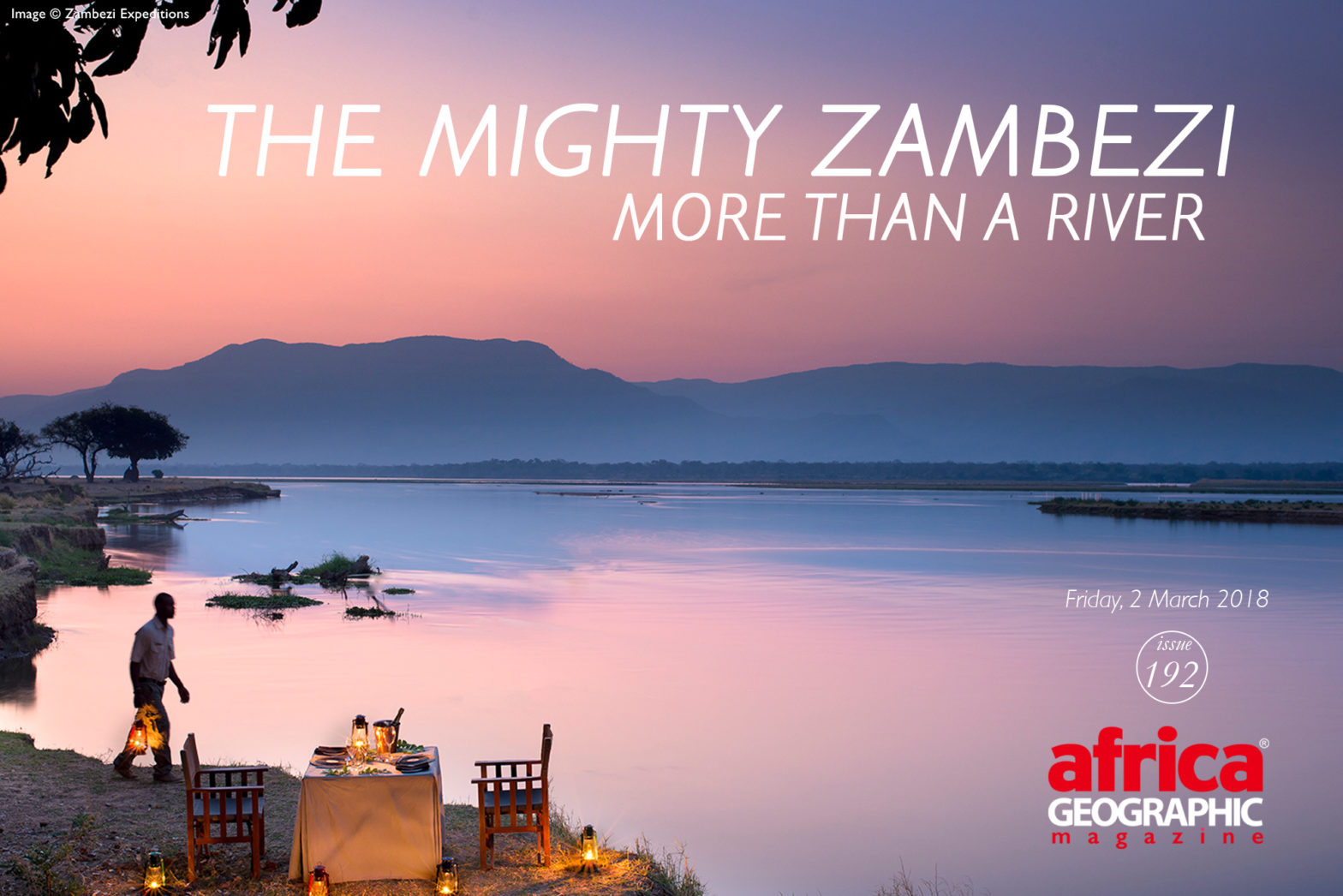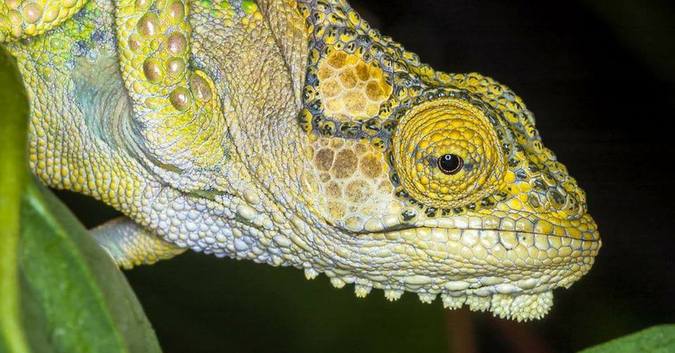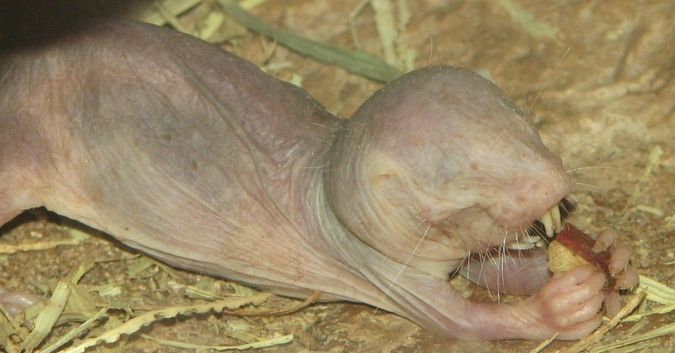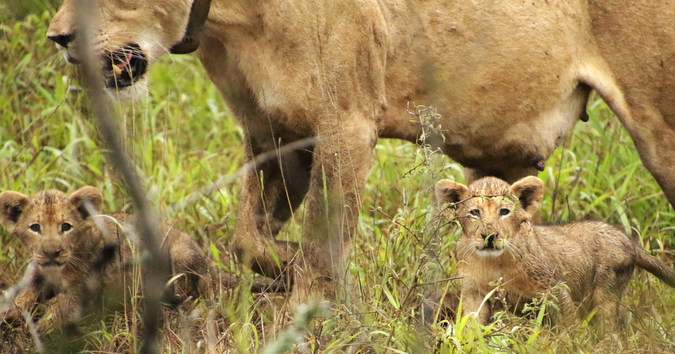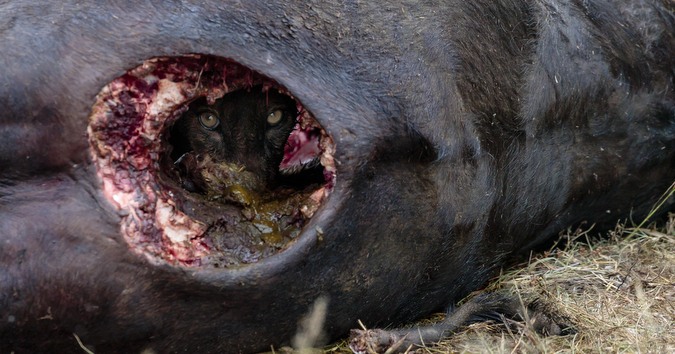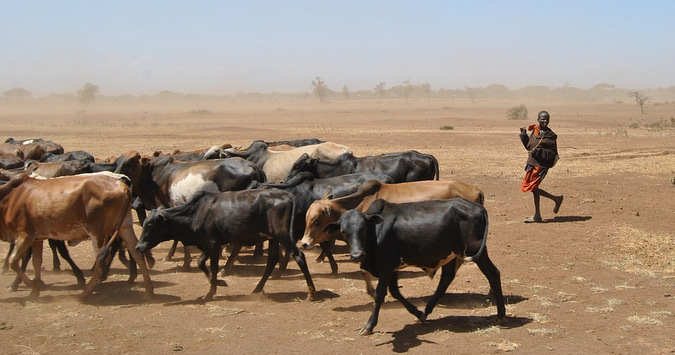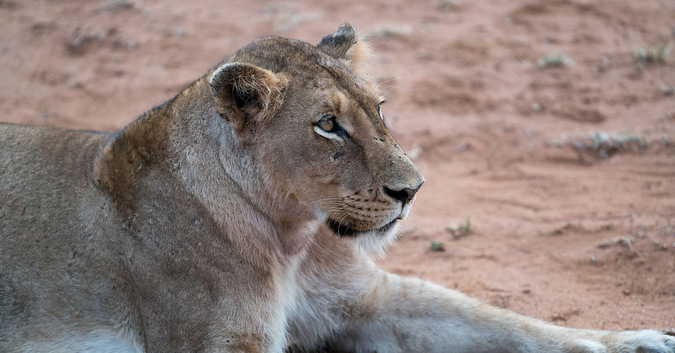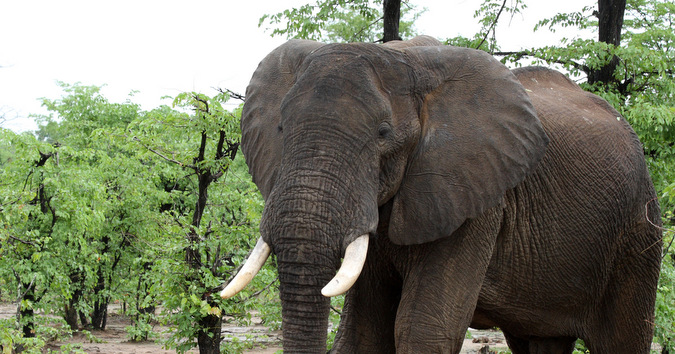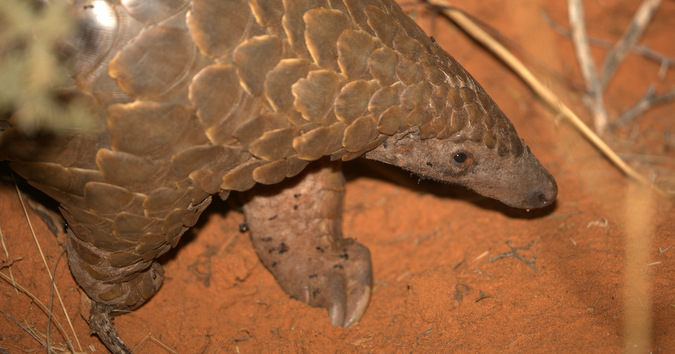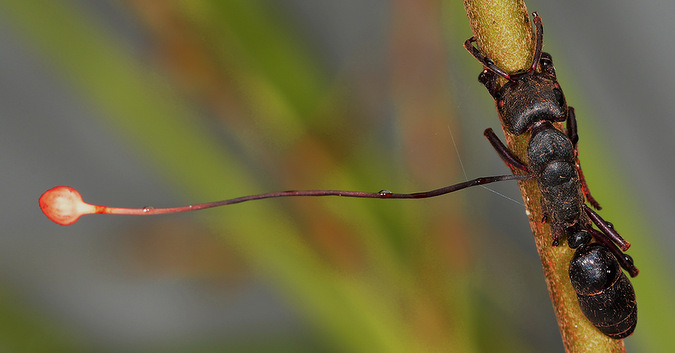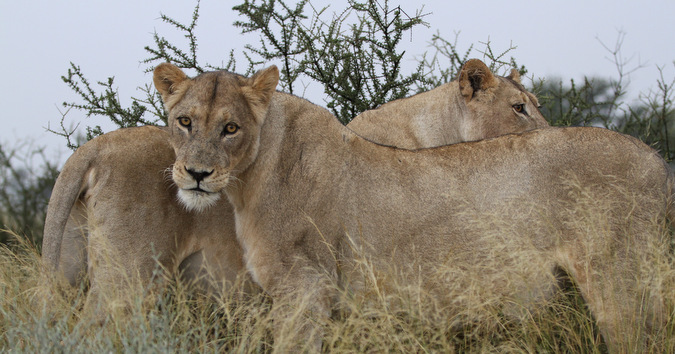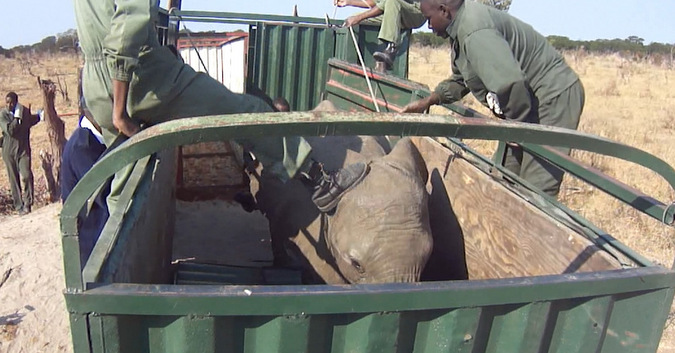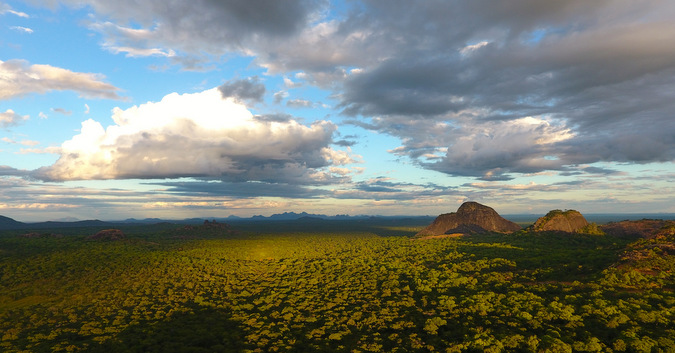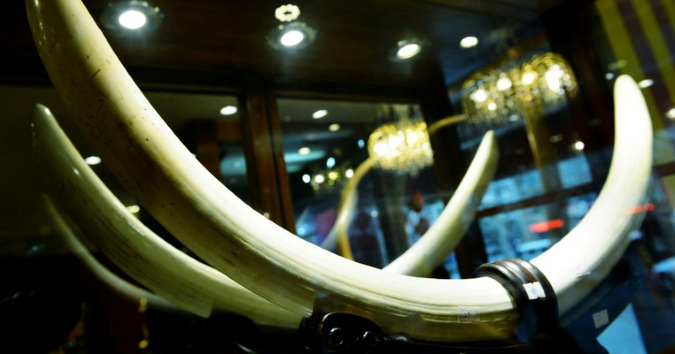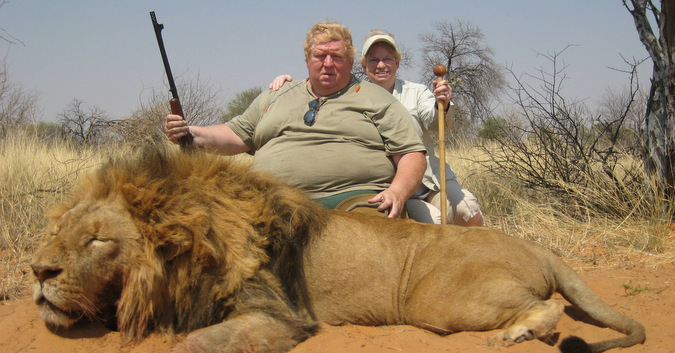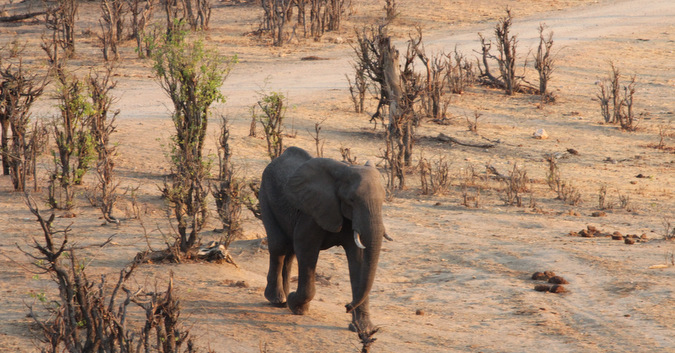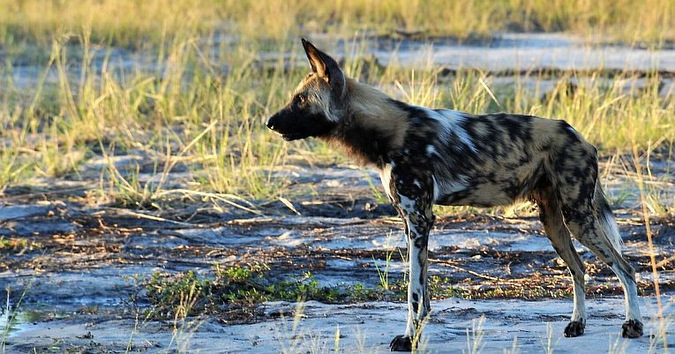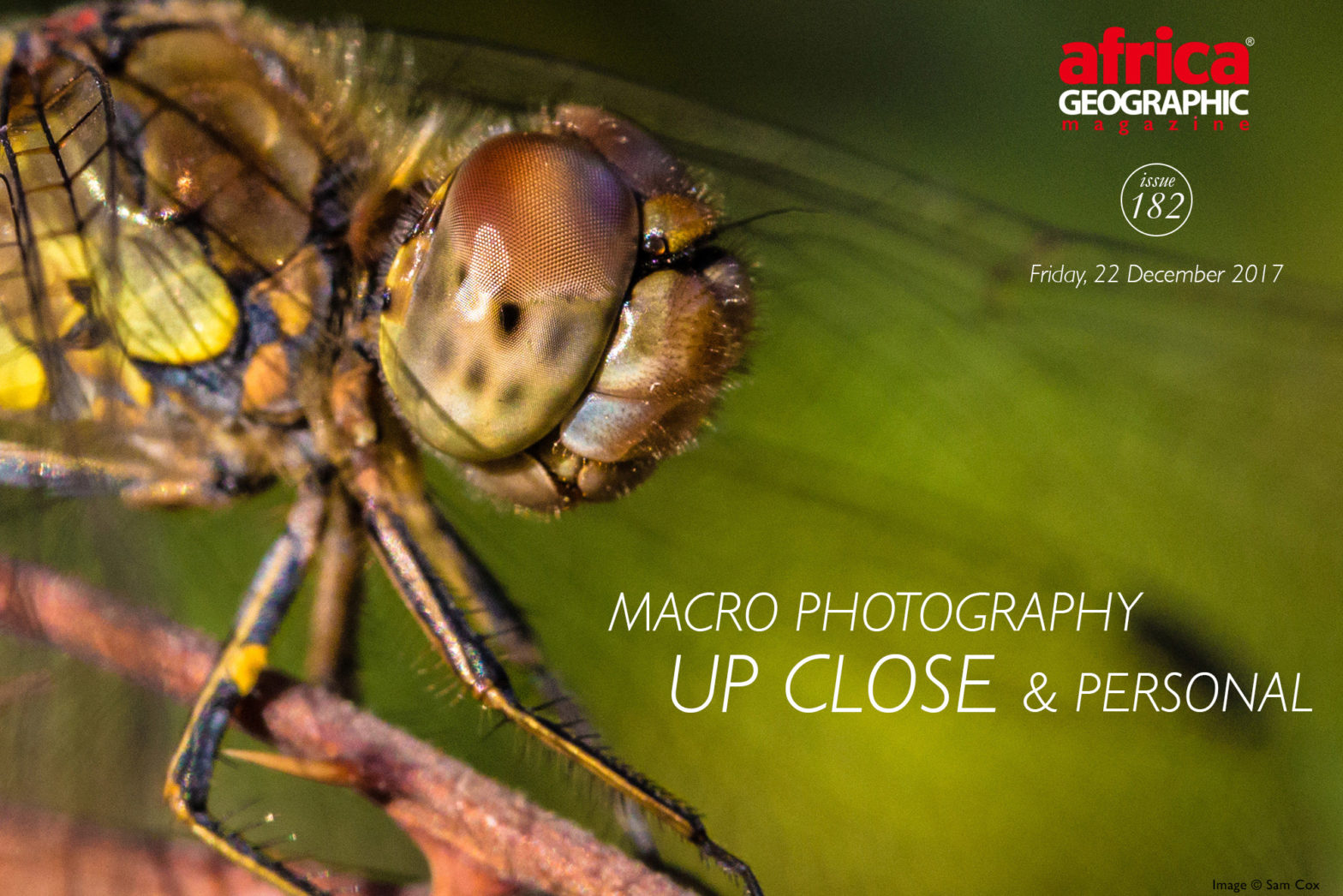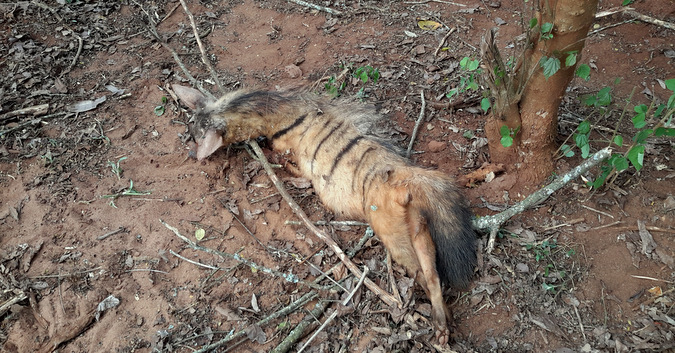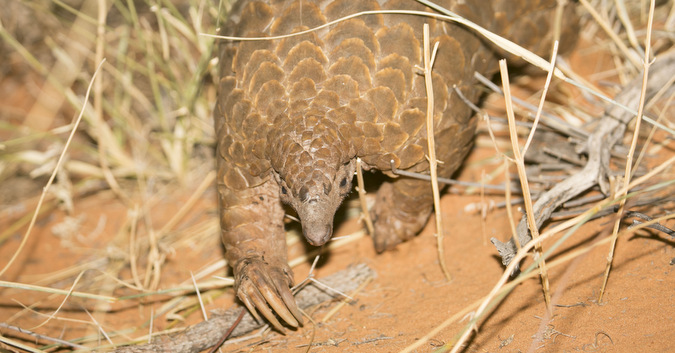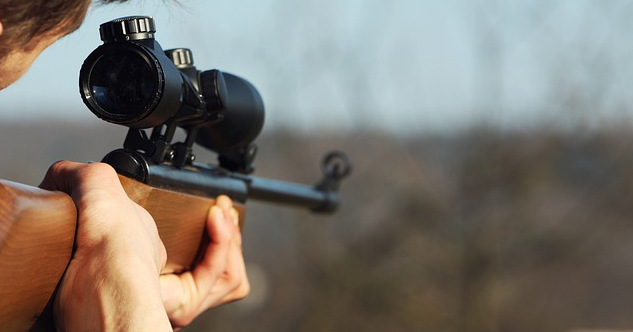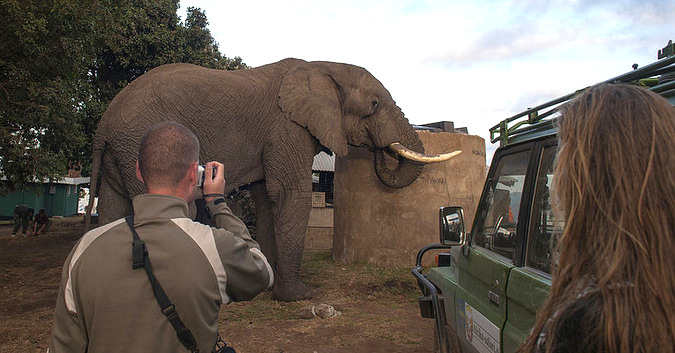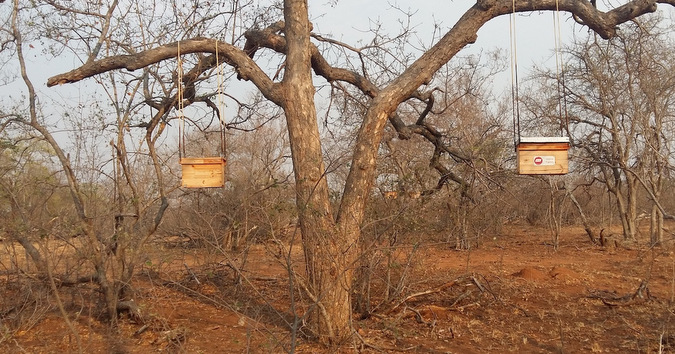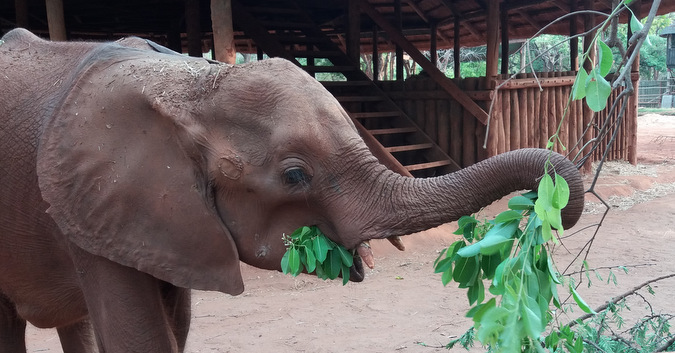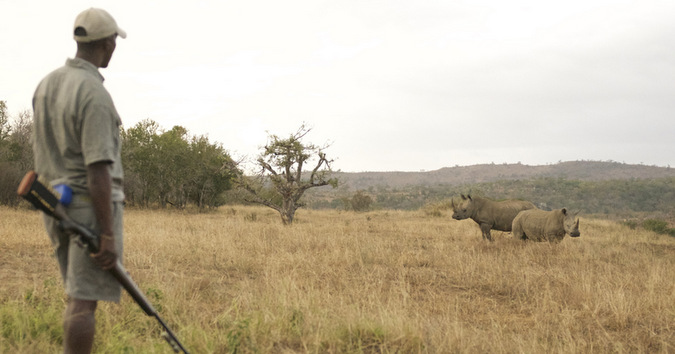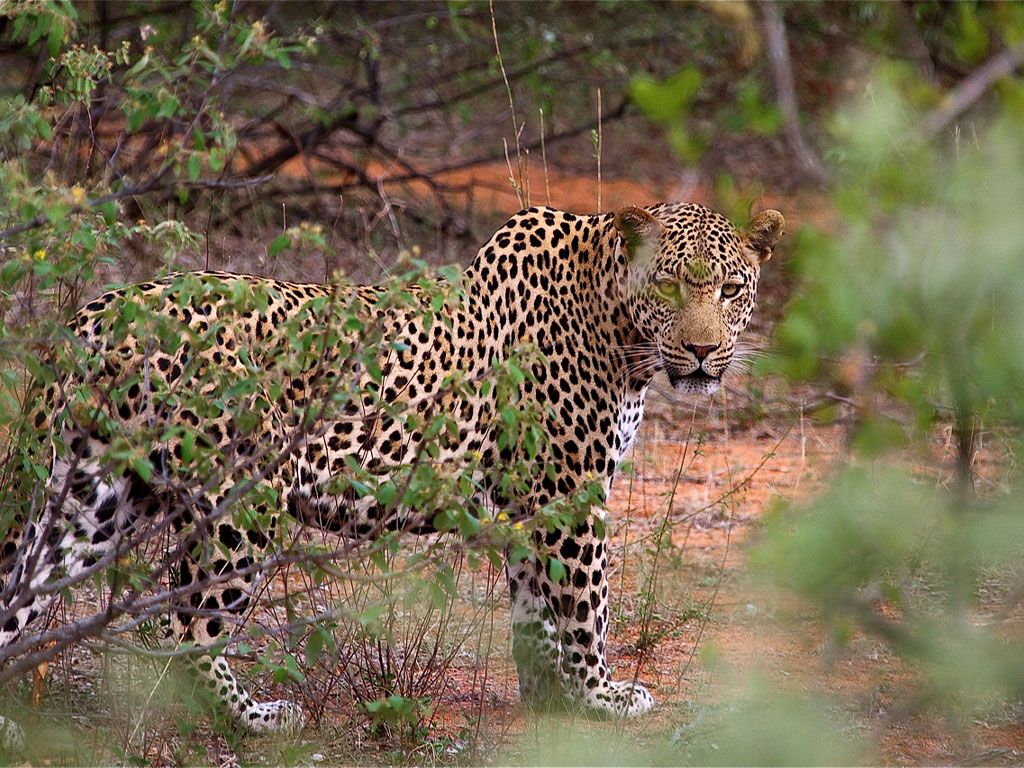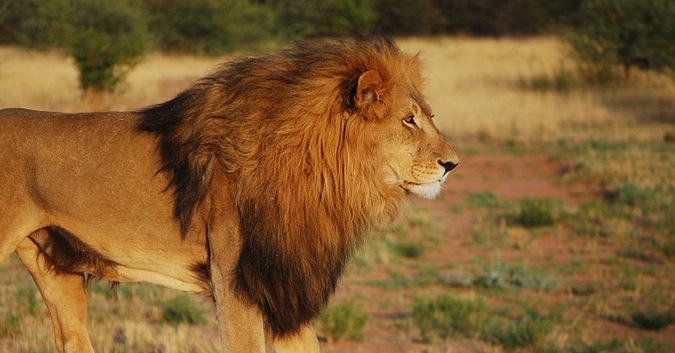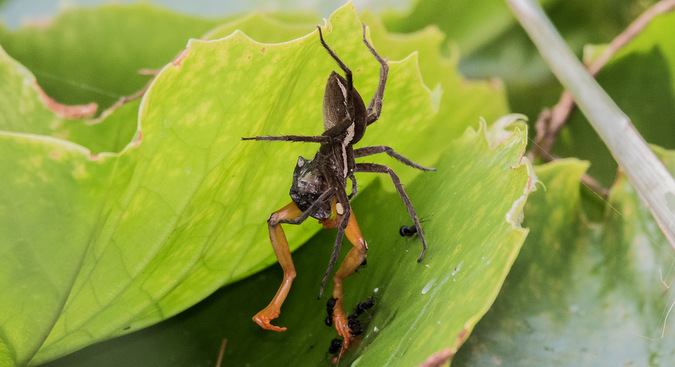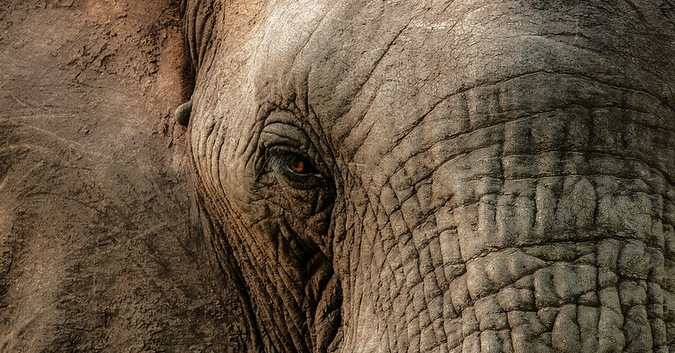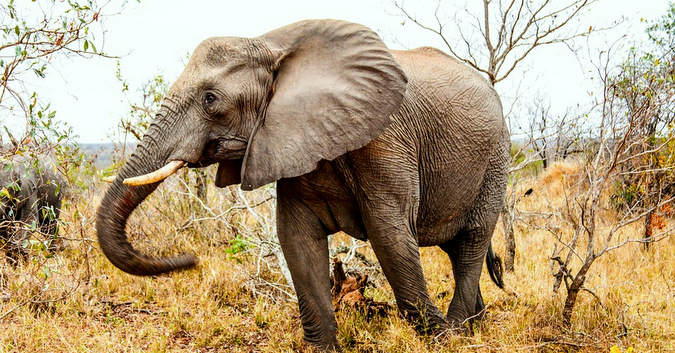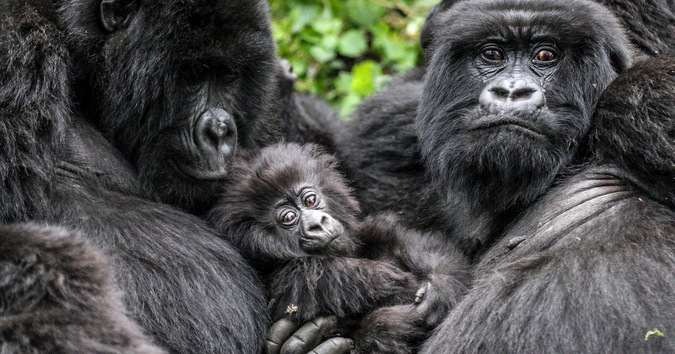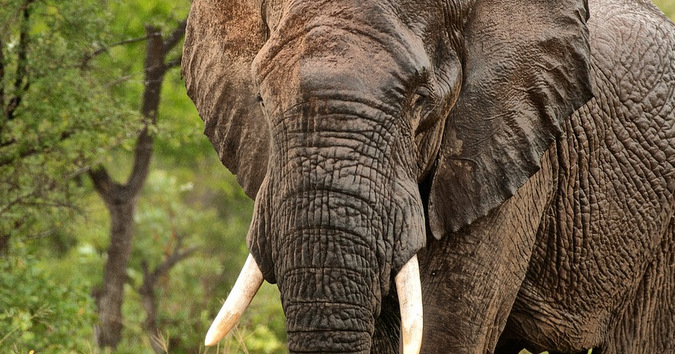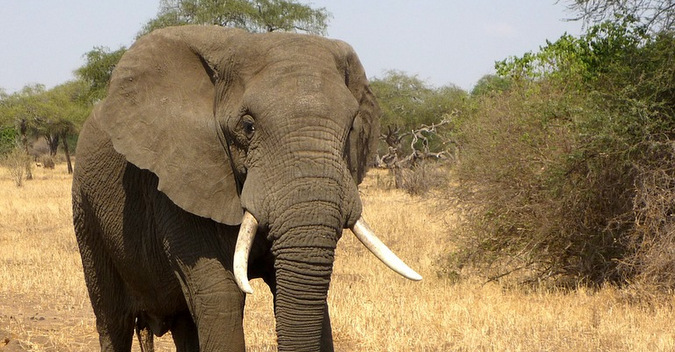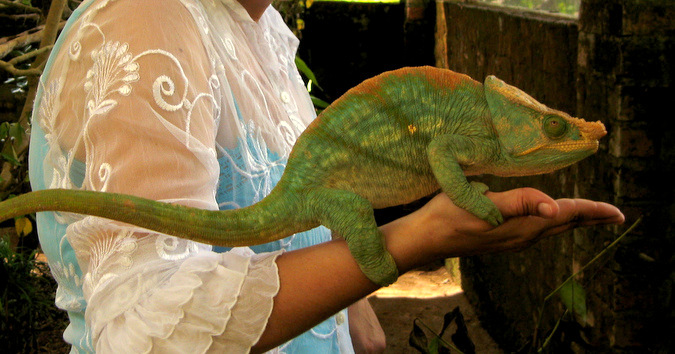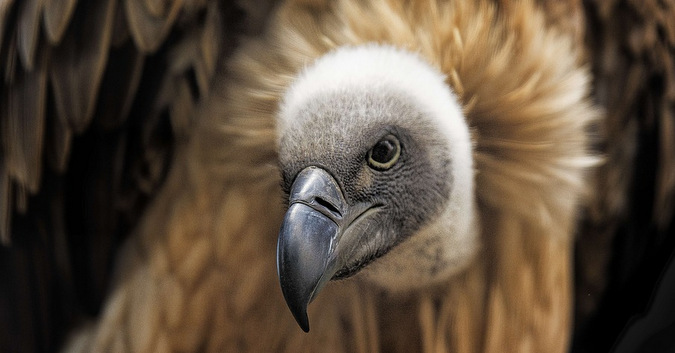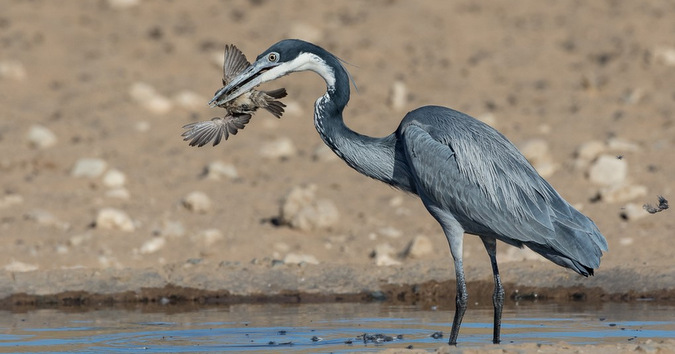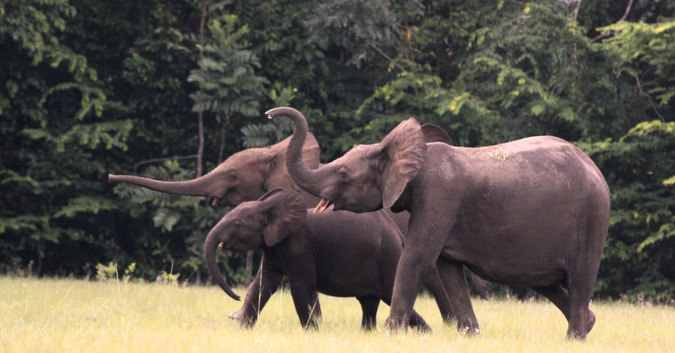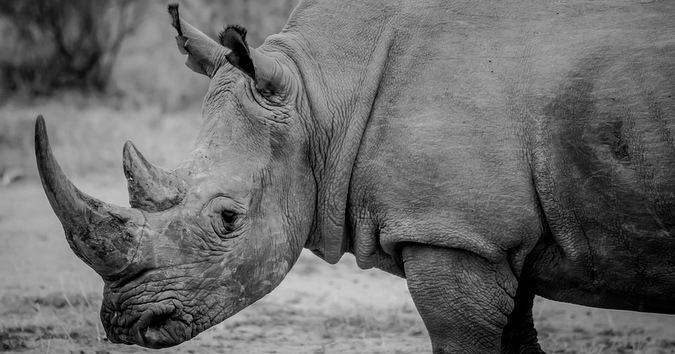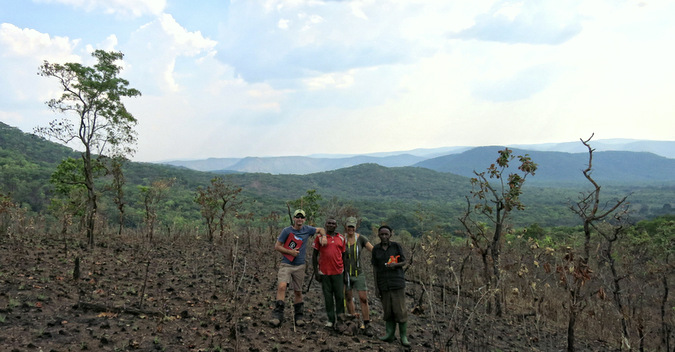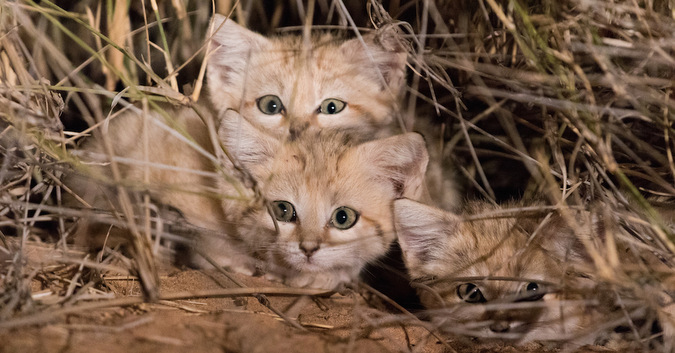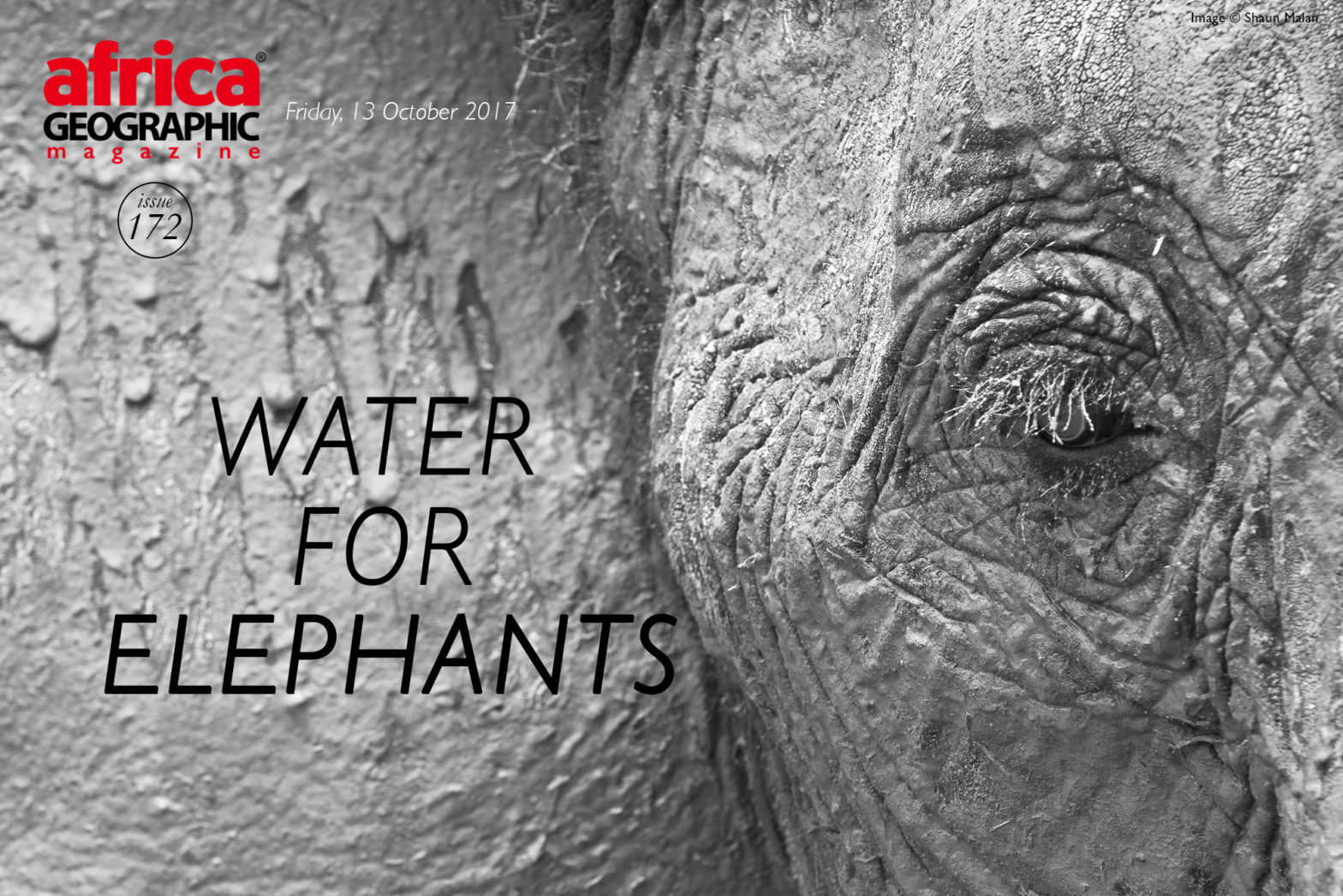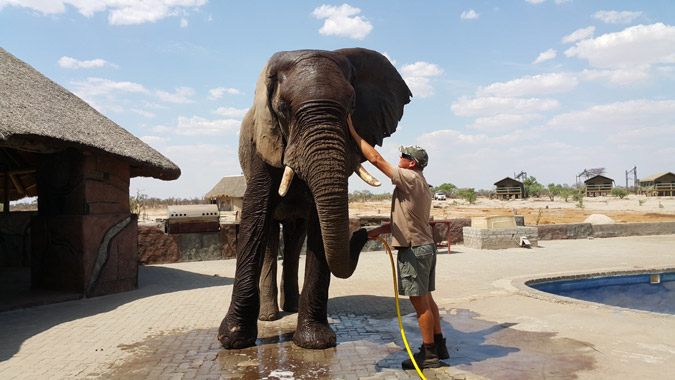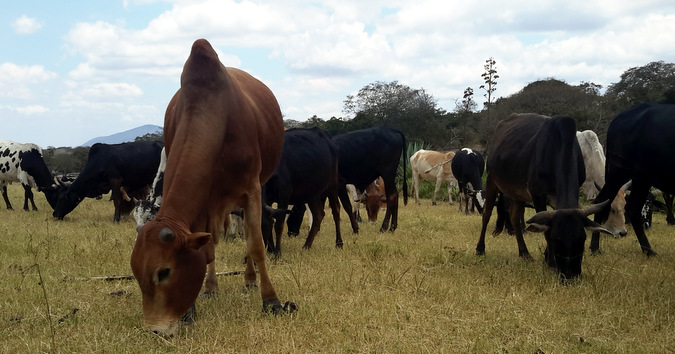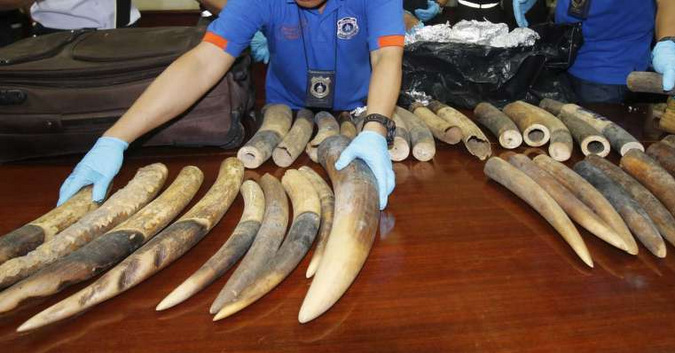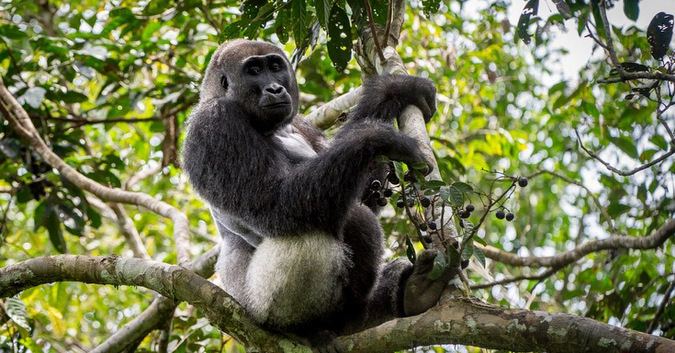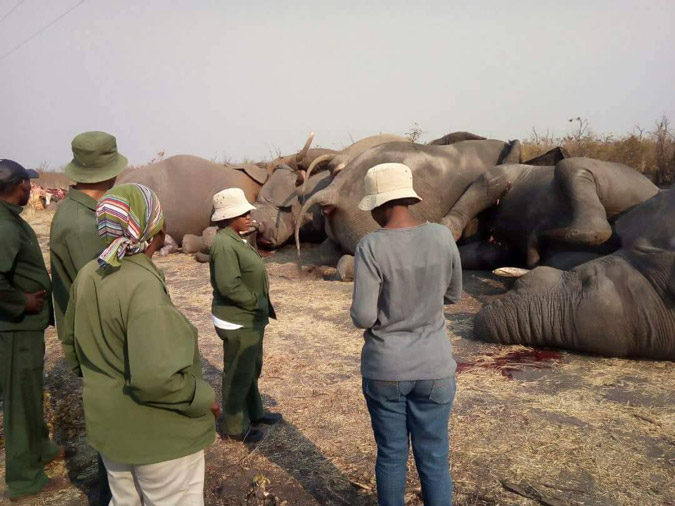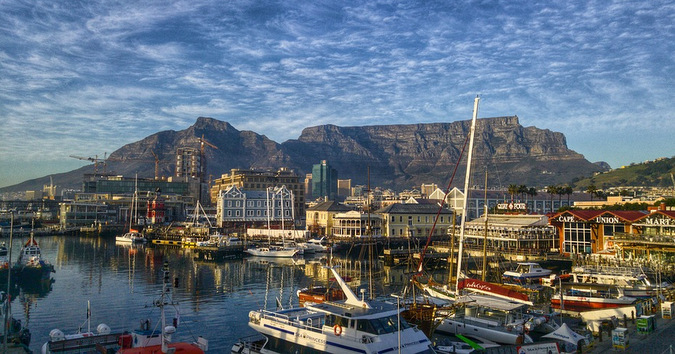Hunters in Zimbabwe have shot dead a bull elephant collared by scientists for research purposes, the second such killing in a month, a conservation group says.
Category Archives: Natural history
Wild dogs return to Gorongosa after decades of absence
Wild dogs will soon roam free in Gorongosa National Park in Mozambique for the first time in decades.
Witnessing an elephant relocation in northern Kenya
We get an insiders view as to what happens during the relocation process of an elephant heading to a new home from Lewa to Tsavo in Kenya.
Africa comes out tops in megafauna conservation survey
Safari tourism instrumental as African countries dominate as best worldwide in large mammal conservation, according to study.
Art safari Q&A: What will I learn on my art safari?
Artist Alison Nicholls answers some frequently asked questions regarding the Africa Geographic Travel art safaris that she runs in the Kruger National Park and Madikwe in South Africa.
Taiwan to revise laws for complete ban in ivory trade from 2020
Taiwanese officials are working to revise regulations so that a solid ban against trade in ivory can be put into force in 2020.
Shoebill – 7 reasons to love this dinosaur of birds
The shoebill (Balaeniceps rex) looks like a bird that belongs in the prehistoric age. Found in the marshes of East Africa, the shoebill is classified as vulnerable and is a bucket-list sighting for any avid birder. Here are seven reasons to love this big bird.
Britain to ban sale of ivory items, regardless of age
With a prohibition on the sale of nearly all antiques containing ivory, the new legislation will create the toughest ban on ivory in Europe.
Macro photography: Capturing a new world
Environmental photographer and filmmaker, Sam Cox, explains his passion for teaching the art of macro photography to international volunteers through African Impact’s Wildlife Photography & Conservation programme. The programme offers volunteers the opportunity to gain practical experience in wildlife photography while helping to raise awareness of environmental and conservation issues in South Africa’s Greater Kruger area. Here, he shares …
Giant rats: A pangolin’s best friend
The pangolin, the world’s most trafficked animal, might have just found a new best friend – the African giant pouched rat.
Hunting causes life-threatening build-up of toxic lead in vultures
Research in Botswana has revealed that fragments of lead from recreational hunter ammunition are finding their way into vulture bloodstreams, and represent a significant threat to these critically endangered scavengers.
Giant elephant killed by hunter – despite research collar
Giant large-tusked elephant (with research collar) removed from the gene pool by a Russian hunter in Zimbabwe.
R.I.P. Sudan – last male northern white rhino
It is with great sadness that Ol Pejeta Conservancy and the Dvůr Králové Zoo announce that Sudan, the world’s last male northern white rhino, age 45, died at Ol Pejeta Conservancy in Kenya on March 19th, 2018.
5 Facts you did not know about African wild dogs
Many will know that Africa’s wild dogs (Lycaon pictus) require vast areas to roam, hunt cooperatively to run down their prey and regurgitate food for pups and other pack members. But there are other remarkable facts about these beautiful animals that perhaps you didn’t know.
Opinion: Timbavati increases conservation levy to fund anti-poaching and other costs
An opinion piece that touches on finding ways to increase financial contribution to the conservation effort in the Greater Kruger.
The angry hippo and a tragic Mara River crossing
Despite the fact that they are known to have an aggressive nature and displays unexpected behaviour, a cold-blooded kill by a hippo is rarely caught on camera in the wild.
Unique sighting: Cheetahs in group mating frenzy
A unique sighting of a coalition of cheetahs trying to mate with a female cheetah in Maasai Mara National Reserve is captured on camera.
Research: Are there too many elephants in Botswana?
Botswana’s researchers contribute to the debate surrounding large elephant populations and their impact on the environment in southern Africa.
Trump administration to allow elephant trophy imports on “case-by-case basis”
The U.S. government will allow hunters to import elephant trophies on a “case-by-case basis”, breaking the president’s pledge.
Fantastic sighting: Honey badger versus jackals
Black-backed jackals receive an unwelcomed guest in the form of a honey badger who was keen to get a taste of a giraffe carcass.
The Sad 5: Endangered animals you don’t see in the headlines
With the lion’s share of international hype seized by flagship species, lesser known endangered animals seem to succumb to the shadows. These five species are among Africa’s most endangered, yet many people don’t even know they exist.
11 Leopard facts you need to know
Discover 11 facts about the African leopard – the most secretive and elusive big cat and the most popular request during a safari game drive
The Mighty Zambezi: More than a River
She goes from lazy and beguiling to a raging beast capable of pounding a man and his ambitions into submission. Indeed, the Zambezi River is quite a lady… Most people know the Zambezi as that intoxicating cauldron of the elements and humankind at Victoria Falls – where that massive river inhales and forces itself into …
Breeding project to save the Knysna dwarf chameleon
The Knysna dwarf chameleon is a species in need of rescuing after devastating fires destroyed most of their habitat in Knysna, South Africa.
Could naked mole-rats live forever?
Naked mole-rats are weirdly spectacular – they are bare-skinned, wrinkly and buck-toothed, and they live in large underground colonies in East Africa where only the queen breeds, with a few selected males. Even more spectacular is that research has shown that naked mole-rats do not age in the same manner as other mammals, and in fact show little to no signs of ageing, and their risk of death does not increase with age.
Lion relocation success: Somkhanda lions reveal their cubs
Four cubs have been spotted recently, sticking closely to their mom, at Somkhanda Community Game Reserve in KwaZulu-Natal, South Africa. This is a true success story around wild lion and their translocation to one of the only community-owned reserves in the country.
Gory splendour: Lion cub and buffalo carcass
A greedy lion cub wants the buffalo carcass all to itself!
17 Elephant facts you need to know
The African elephant (Loxodonta africana) is the largest land mammal in the world and one of nature’s great ecosystem engineers, being a major contributor to maintaining the balance between wooded and grass ecosystems. Here are 17 fascinating facts that you need to know.
Mass poisoning incident leaves lions, vultures dead near Ruaha
A mass poisoning incident in the Wildlife Management Area just outside Ruaha National Park has left six lions and over 70 vultures dead.
Can elephants run, or do they just walk faster?
A fascinating study has revealed that although elephants can move at considerable pace, there is a question as to whether they can run.
7 Consequences of replacing wildlife with livestock
Seven interesting findings based around the impact on ecological processes and ecosystems of the ongoing extinction of native African herbivore species and the increase in livestock populations.
Largest US safari club slams door shut on SA’s canned lion industry
The world’s largest hunting club, Safari Club International (SCI) has slammed the door shut on South Africa’s canned lion industry, announcing it will no longer allow captive-bred lion operators to advertise or market captive-bred lions (CBL) at its annual convention, and will reject all captive-bred lion entries for its record books.
Trump confirms US elephant trophy ban remains
US President Donald Trump has confirmed in an interview with Piers Morgan that he will not be lifting the ban on elephant trophies from Zambia and Zimbabwe.
Cuteness alert: Rescued baby genets
These incredibly adorable baby genets stole the heart of their caretaker
Rhino poaching update – we look behind the numbers
We look behind the 2017 rhino poaching numbers
Pangolin research in the Kalahari
Little is known about how pangolins might cope with the direct and indirect effects of a changing climate. A PhD researcher is therefore investigating the body temperature, diet, and activity patterns of free-living ground pangolins in a semi-arid environment in South Africa.
Zombie ants and the dark side of the Force
Zombie ants and mind-controlling fungus reveals the darker side of the insect world.
Kalahari lions: Research sheds light on population
Research has revealed that the Kgalagadi Transfrontier Park (KTP) straddling South Africa and Botswana is a stronghold for African lions.
Mr President: Selling wild-caught baby elephants to China is just plain evil
An open letter to the president of Zimbabwe regarding the recent exportation of wild-caught baby elephants from Zimbabwe to China.
Niassa suffers forest loss, but able to support elephants and lions
A recent study states that Niassa National Reserve in Mozambique still has the potential to support tens of thousands of elephants and 1,000 lions, as the vast majority of the ecosystem is intact.
Federal Court invalidates decision for trophy imports to US
The US Federal Court of Appeals has invalidated the decision to allow the import of animal parts from trophy hunts from Zambia and Zimbabwe.
China’s ban on domestic ivory sales now in effect
China’s complete ban of the buying and selling of ivory products went into effect on Sunday.
Opinion: Hunting’s threat to conservation
An opinion piece in response to Peter Flack’s recent article that offered a hunter’s perceived threats to conservation in South Africa.
Opinion: Elephants damage only 1% of Hwange’s vegetation
One of the main motivations for killing elephants in Hwange National Park in Zimbabwe is the argument that they destroy the plants and this is accepted by many as a problem. Let’s discuss whether this argument is not just an excuse for proponents of culling to get more ivory for the ivory trade, or to justify higher quotas for nearby hunting areas.
Wild dogs vote with sneezes
Scientists studying wild dogs in Botswana have found members of this endangered species use sneezes to vote on when the pack will move off and start hunting.
Macro photography: Up close & personal
How often can you say that to take photographs of your subjects you have to lie down on the ground? Well, how else would you be able to get a ground-level perspective of the life of an ant, or peer in close to fully appreciate the form of a spider? Most people don’t. We walk …
Japan’s ivory market must close down, according to study
With China announcing that it would shut down all ivory trade by the end of this year, concerns have been raised that Japan’s failure to prevent illegal ivory exports will undermine China’s prospective ban and the efforts to end the global trafficking of elephant tusks.
Harmless aardwolf killed: The need for education
An unfortunate incident of mistaken identity where an aardwolf was misidentified as a hyena highlights the need for wildlife education.
Pangolin trafficking: Research reveals new routes
A recent study has revealed that pangolin smugglers are constantly opening up new global trade routes every year to avoid law enforcement agencies.
New hunting association formed after outcry over captive-bred lion hunting
A new association representing the interests of professional hunters, opposed to hunting captive-bred lions, has been formed in South Africa.
Safari tips: safety and wild animals
Here are 10 important pieces of information to keep in mind about wild animals when on safari in Africa.
Bees protect large trees from elephant impact
A study has found that hanging beehives containing African honeybees from the branches of marula trees protects these trees against elephant impact because the elephants avoid those trees.
Opinion: Hunting is sustainable (ab)use
None of the existing role players in conservation understand what is required to save Africa’s vanishing wilderness. The issue is just too broad and deep – and politically charged.
Snakebite season in Southern Africa
Many bites from deadly snakes are difficult to prevent as people accidentally stand on snakes, especially at night. But the snake that has been biting lots of people recently is the poorly-known stiletto snake, also known as the side-stabbing snake.
The elephant orphans of Zambia
The Elephant Orphanage Project provides a sanctuary for defenceless elephant calves, who are the victims of poaching, human conflict or occasionally natural abandonment. Under the age of two, young elephants are extremely vulnerable and very dependent. Most will not survive without both their mother’s care and her nutrient-rich milk.
Hluhluwe iMfolozi Park: Protecting the “birthplace of rhino”
Over the past few months, Hluhluwe iMfolozi Park (HiP) in KwaZulu-Natal – managed by conservation agency Ezemvelo KZN Wildlife – has been hard hit by a significant escalation in rhino poaching. Ezemvelo has subsequently been hard at work developing more effective anti-poaching and resource management strategies. In support of this, Peace Parks Foundation has committed an additional R10,6 million towards the implementation of advanced technology solutions in this sacred rhino protection area.
Why the green season is the time to visit Botswana
Botswana’s green season, the months of November to March, is known by locals as the “secret season” – when you will have game drives to yourself, and enjoy amazing sighting
Trophy hunting may cause extinction in a changing environment
Trophy hunting and other activities involving the targeting of high-quality male animals could lead to the extinction of certain species faced with changing environmental conditions, according to new research.
Fishing spiders: Small but deadly predators
A trip to Africa can sometimes provide unique sightings other than elephants, lions and antelopes. And extraordinary sightings such as a fishing spider feeding on a freshly captured Argus reed frog is one such example.
PHASA approves canned lion hunting, faces backlash
In a change of policy after earlier turning its back on the breeding and hunting of captive lions, the Professional Hunters’ Association of SA (PHASA) has now approved such practices. During their annual general meeting on 22 November, members voted to approve “the hunting of captive bred lions as a legitimate form of hunting”.
Opinion: The voice missing from the elephant trophy debate? Africans
People are likely to live with wildlife only when they have some realistic incentives to bear the costs of doing so. If wildlife doesn’t in one way or another form part of the livelihoods of people, it will inevitably make way for activities that do. For elephants, these incentives mean tourism and, yes, even trophy hunting.
Opinion: The trouble with trophy hunting
Frank Pope, CEO of Save the Elephants, shares his insight into the latest news around the import of elephant trophies from Zimbabwe to America.
South Africa’s top tourist attractions
If there was a checklist for the perfect travel destination, South Africa would tick most of the boxes. Famed for its amazing wildlife and landscapes, superb local cuisine, warm hospitality and great weather, (plus the added bonus that its affordable) it’s easy to understand why tourism is so big in South Africa.
Video: Lots of gorillas, and luckily not much mist!
As part of our four-month trip around Africa, we decided to spend some of our time with the mountain gorillas in Volcanoes National Park in Rwanda.
Now Trump calls elephant trophy hunting a “horror show”
President Trump called elephant hunting a “horror show” Sunday and strongly suggested he will permanently block imports of elephant trophies from two African nations despite his administration’s earlier approval of the practice.
Decoding Kruger’s ‘Elephant Management Plan’
The Kruger National Park is vast, at about 2 million hectares, and requires a thorough management strategy in order to ensure long term sustainability. Part of that strategy, The Elephant Management Plan – compiled by Kruger management and Scientific Service – is currently in force, and covers the period 2013 to 2022.
US to lift elephant trophy ban
US authorities will remove restrictions on importing African elephant trophies from Zimbabwe and Zambia.
Opinion: Too many lions in Kunene
Whether tourism operators and armchair lion-lovers like it or not, there are now too many lions in some parts of the Kunene region. Trying to save the lions that are killing livestock, or harassing the farmers who kill them, including impounding their firearms, will not serve the interests of conservation in the region.
Problem lions announcement: Conservationist challenges Namibian minister
Conservationist challenges Namibian minister in open letter regarding decision to relocate or kill problem lions in the Kunene region.
Lion pride kills over 250 livestock in Namibia in one week of carnage
Over 280 goats and sheep have been killed by the same lions in two different locations over the past week in the Kunene region in Namibia.
The chameleon the size of a house cat: 7 fascinating facts
The Parson’s chameleon is regarded as the largest chameleon in the world, found in the lush rainforests of eastern and northern Madagascar. Here are some fascinating facts about this giant creature of the forest.
Bamboo lemurs on the brink, driven by climate change
What do China’s giant pandas and Madagascan bamboo lemurs have in common, aside from their precarious conservation status?
Unlocking the potential of Zinave National Park
Zinave National Park in Mozambique has come alive with activity that will see the full potential of this breathtaking conservation area unlocked over the next decade.
49 Vultures poisoned near Kruger National Park
The poisoned bodies of nearly 50 vultures have been found by rangers in Mozambique‚ just a short distance from the boundary of the flagship Kruger National Park.
The bird-eating heron of the Kgalagadi
The Kgalagadi always delivers unusual opportunities to photograph animal and bird behaviour – such as a bird-eating heron.
Forest elephant population collapse in Central Africa
Wildlife censuses carried out in four Central African countries have revealed that forest elephant populations have declined by approximately 66% over eight years in an area covering almost 6 million hectares.
Kruger should cull 88% of its elephants, says hunter Ron Thomson
Celebrated hunter Ron Thomson believes that 88% of Kruger National Park’s elephants should be culled.
Rhino horn: Recipes for disaster
In the middle of the sixth mass extinction, when 50% of the living species are at risk of extinction due to the ever growing, destructive human hands, the six rhinoceros species are at the tip of the pyramid, among the most endangered species on Earth.
Can carbon measuring save Tanzania’s forests?
Up until now I have never been involved in projects that mitigate climate change, however during my last expedition, I had the opportunity to spend some time exploring the greater Mahale ecosystem and Carbon Tanzania’s newest project site.
Kruger: Is this the technological future?
Presently, we are able to instantly globally share everything we see and hear in Kruger and just about every other destination on earth. Animal sightings and locations are given in real time and we are able to send photos and videos across a host of social media platforms.
Social media used to sell big cats in UAE despite law
Cheetah cubs continue to be sold on the UAE black market via social media accounts operated by five key dealers, helping fuel a thriving trade in illegal exotic pets.
Video: Adorable sand cat kittens spotted for first time in wild
On a recent expedition to Morocco, Grégory Breton, director of Panthera France, captured stunning (and viral!) videos and photos believed to be the first-ever sighting of wild sand cat kittens in their African range.
66 Giraffes join thousands of other animals exported to China
Sixty-six giraffes arrived in central China’s Henan Province in the early hours of Sunday, on a chartered flight from Johannesburg, South Africa, according to local sources.
Water for Elephants
There is a crisis of elephantine proportions playing out in the dry sandy Kalahari woodlands of eastern Botswana, and a determined family of caring people is caught in the middle of the drama. A friend and I spent a few days with them in September this year and came away determined to help. I hope that …
Benny the elephant and Mike – a touching African story
When the dry season sets in and water is scarce, barriers blur and relationships are forged out of necessity. One such relationship is that of Benny the elephant and Mike the human.
Giant Kenyan elephant killed by authorities on suspicion of killing farmer
One of the last big elephant bulls in Africa was shot and killed by the authorities because it was suspected he had killed a farmer.
Opinion: Are Maasai cattle to blame for overgrazing in Tanzania?
Living with the Maasai has taught me that conservation is not only about animals but is just as much about us humans; that to preserve any one place we have to be mindful of the local communities that live within it and try to understand the way they view the world to be able to work alongside them to protect mother nature.
My ‘Delta Detox’ mobile safari experience
Safari report-back: My tented mobile safari in the Okavango Delta, Botswana – an adventure I will never forget. By Carolien du Plessis
Video: Young elephants kicked and slapped during capture for Chinese zoos
Rare footage of the capture of wild young elephants in Zimbabwe shows rough treatment of the calves as they are sedated and taken away.
Kruger: Impact of social media and mobile phones – good or bad?
Technology and social media have shaped the Kruger experience into something radically different from what it was ten years ago.
Laos: The fastest growing ivory market in the world
A new report has revealed that China’s neighbouring country, Laos, has now become the fastest growing African ivory market in the world.
Lions escape from Etosha, kill livestock
Lions from Etosha National Park in Namibia have reportedly escaped into the neighbouring Sesfontein Constituency and have managed to kill 19 goats in one night.
‘Iconic tusker’ shot by trophy hunters in Zambia
A large bull elephant, described as an ‘iconic tusker’ was trophy hunted in Zambia this weekend – the biggest elephant trophy in decades.
Understanding elephant movements across international borders
A transboundary elephant connectivity study has been launched in western Zambia with the fitting of satellite tracking collars to wild elephants to investigate their cross-border movements.
Elephant ivory and the Japanese hanko stamp
Hanko stamps are the Japanese version of a signature, used throughout Japan to sign deals and important documents, and are made out of a variety of materials, including elephant ivory.
Field notes: Western lowland gorillas feeding on seasonal fruits
Odzala-Kokoua National Park guide, Alon Cassidy, enjoyed some wonderful sightings of western lowland gorillas enjoying some seasonal treats.
9 Elephants die in freak electrocution accident
In a tragic accident, 9 elephants have died in a freak accident after being electrocuted by power lines near Sua Pan and a village called Dukwi in Botswana.
Cape Town + bush safari combos
How does one exactly combine Cape Town’s summer splendours with a wild Big 5 bushveld safari? We provide four fantastic summer/autumn combos!
Marine flatworms: The butterflies of the sea
Labelled the butterflies of the sea, we often ask ourselves why are marine flatworms so vibrantly coloured? Is it simply that they can be, therefore they are? Or is there a deeper significance?


